Text
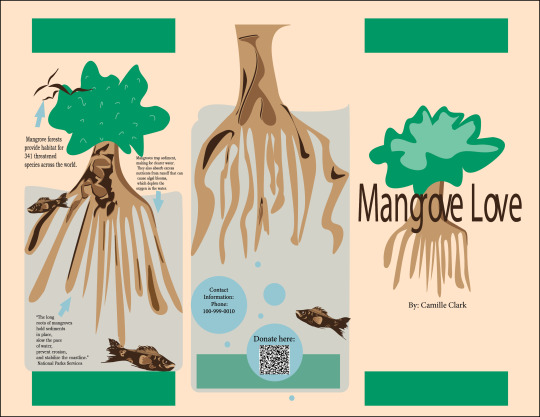
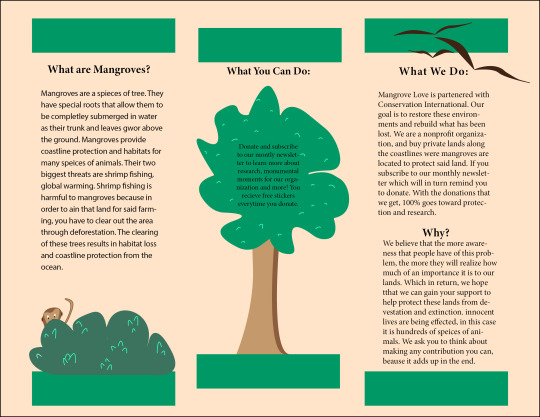

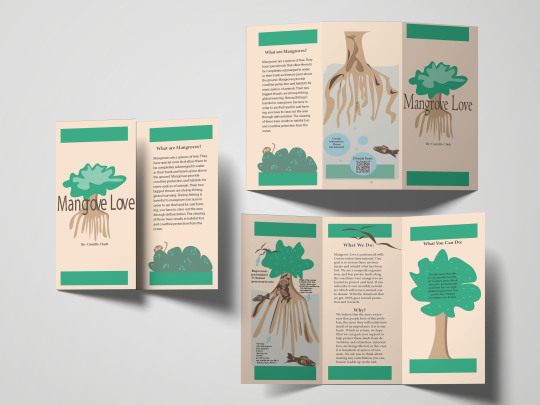



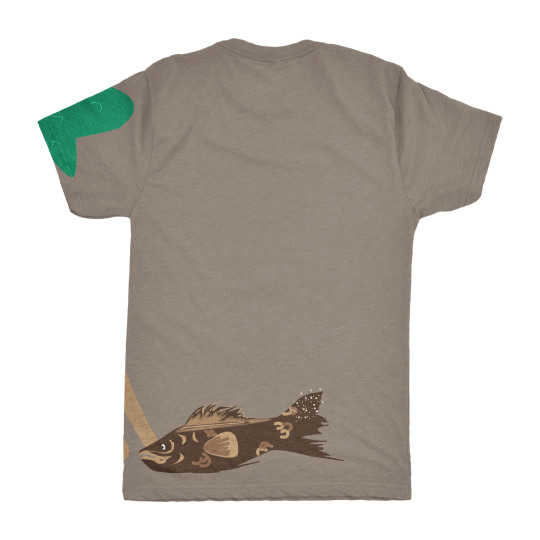
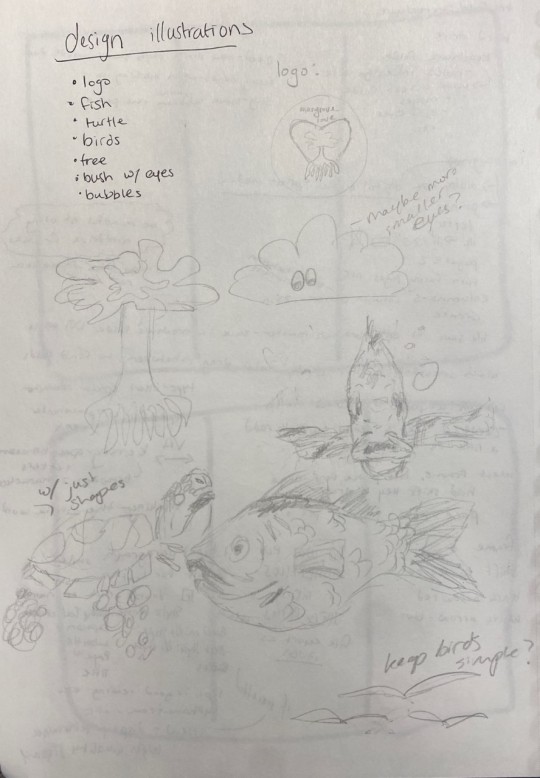
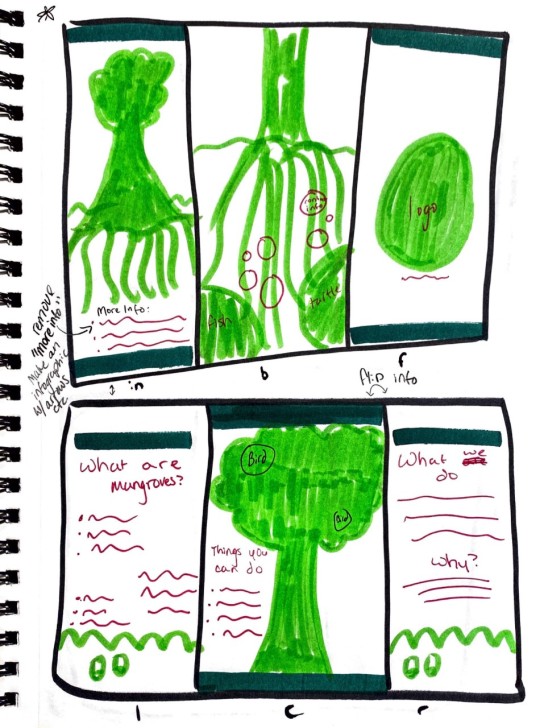

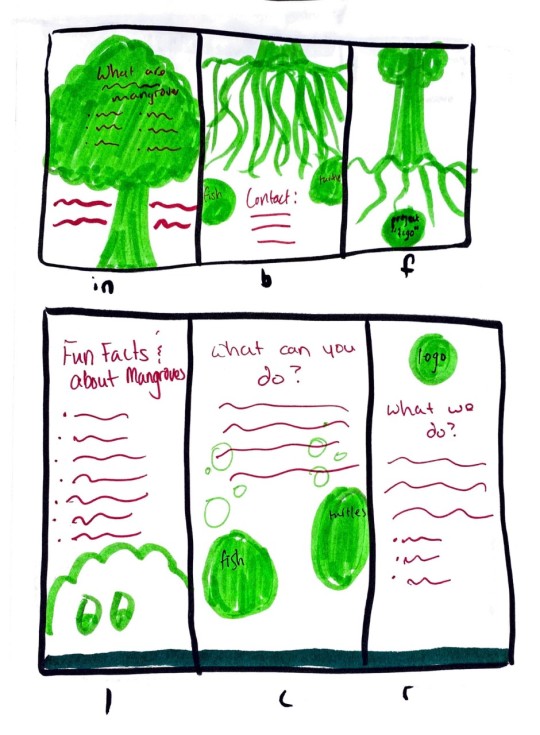
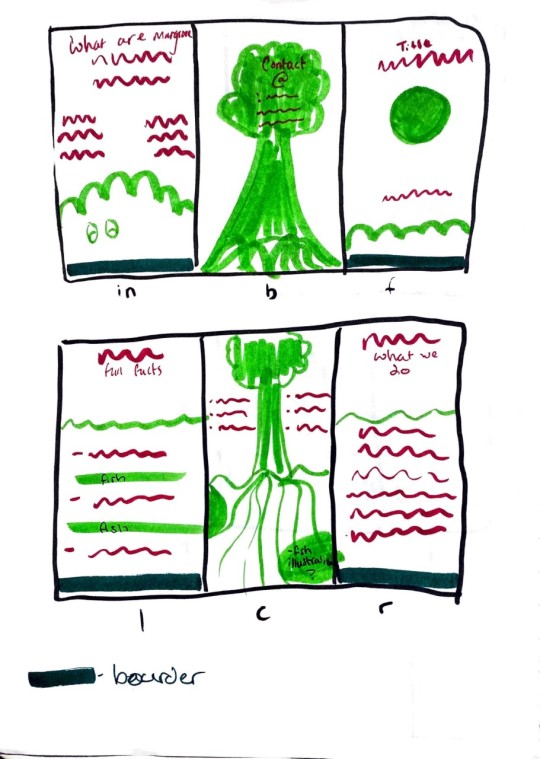



This is the end result of my final GAC project. I experienced some challenges and difficulties, such as file placement and exporting, but I researched how to fix it and I did. I enjoyed this project overall, it gave me a great amount of satisfaction to start with just a vision in my head that I was able to create.
Project Proposal:
Mangroves are trees that survive in water and land. They filter out toxic chemicals and protect our coastlines from natural disasters. They also provide a large ecosystem base for many birds, insects, reptiles and animals. It is important to have an advocacy campaign for their restoration because this is a problem worldwide. Deforestation is creating the loss of these habitats and ecosystems along the coastlines. Many different species are being affected, birds, animals, and plants are closer and closer to extinction as the problem gets worse. To take action and support the campaign “Mangrove Love”, you can donate as we account or buy private land and restore and protect these lands. We are partnered with Conservation International. Conservation International is a foundation that you donate to, and they buy land to protect and do research on. There is also a monthly email newsletter to remind you to donate, in return you will get stickers and have access to the current research data that our teams are producing, and you are able to see on paper the difference that you personally are making. Our team will have the email list linked on our pamphlets as well as our Venmo to help support our funding and research for donations.
The campaign’s color scheme is nature, including the following colors: lime green, green, pine green, dark green, light bronze, coffee brown, chocolate brown, arctic blue, and spruce blue. The use of these colors will make the audience feel empathetic towards nature and environmental. For the title and header, I am using Minion Variable Concept. For the body text I am using Bookman Old Style. I will state the facts in Papyrus, and for statistics I will be using Engravers MT. I am using these fonts because I feel as if they give the design character, especially for the statistics and facts, they are a more eye-catching font than the rest. All of these elements together will give a sense of appreciation towards the world's beauty, as these are colors that are seen in nature on a day-to-day basis. Hopefully then causing the viewer to donate towards the cause.
My audience is anyone that is willing to help donate and fund this project. We are targeting construction companies and fishing companies as they are the leading causes of deforestation and habitat loss. My logo that I have designed is the project name “Mangrove Love” with a heart shape and mangrove tree on the center of the heart, with the name above the heart. I also have a plain and simple type of the name “Mangrove Love”. The graphics that I am illustrating include: fish, a turtle, bubbles, a mangrove tree from further away (the whole tree and roots) a closer version of a mangrove tree (just roots and some trunk), birds, a bush with a monkey in it and the rest will be illustrated as needed. In conclusion, I have many elements that will engage the viewer enough to hopefully get their attention and have them contribute to the purpose of our mission.
Research:
American Museum of Natural History-
“The Importance of Mangrove Forests: Diverse Ecosystems: AMNH.” American Museum of Natural History, https://www.amnh.org/explore/videos/biodiversity/mangroves-the-roots-of-the-sea/why-mangroves-matter.
“Mangroves, seagrass beds, and coral reefs are often found together and work in concert. The trees trap sediment and pollutants that would otherwise flow out to sea. Seagrass beds provide a further barrier to silt and mud that could smother the reefs. In return, the reefs protect the seagrass beds and mangroves from strong ocean waves. Without mangroves, this incredibly productive ecosystem would collapse”
Florida Department of Environmental Protection- https://floridadep.gov/sites/default/files/benefits-of-mangroves-2-8-16.pdf
Benefits of Mangroves - Florida Department of Environmental Protection. https://floridadep.gov/sites/default/files/benefits-of-mangroves-2-8-16.pdf.
“• Stabilize the coastline
• Protect water quality
• Reduce coastal flooding
• Provide habitat for fish
• Protect wildlife species
• Protect young fish from predators
• Serve as nesting area
• Contribute $7.6 billion annually to the economy and create 109,000 jobs”
Mangrove.org
“The Importance of Mangrove Forests: Diverse Ecosystems: AMNH.” American Museum of Natural History, https://www.amnh.org/explore/videos/biodiversity/mangroves-the-roots-of-the-sea/why-mangroves-matter.
“Despite increasing awareness regarding value and importance, the destruction of mangrove forest continues to take place in many parts of the world under a variety of economic as-well-as political motives. In some areas, mangroves are protected by law but a lack of enforcement coupled with the economic incentive to reclaim land can result in deliberate destruction.”
World Economic Forum
“5 Reasons to Protect Mangrove Forests for the Future.” World Economic Forum, https://www.weforum.org/agenda/2019/02/5-reasons-to-protect-mangrove-forests-for-the-future/#:~:text=Mangroves%20provide%20valuable%20protection%20for,is%20stored%20within%20the%20plant.
1. They are a natural coastal defense
2. They are carbon sinks
-An examination of 25 mangrove forests across the Indo-Pacific region found that per hectare, they held up to four times more carbon than other tropical rainforests.
3. They provide livelihoods
4. They encourage ecotourism
5. They are rich in biodiversity
-The International Union for Conservation of Nature’s (IUCN) Red List shows that of 68,574 species of invertebrates, 8,374 were on the brink of extinction.
Conservation International
“Mangroves.” Conservation International, https://www.conservation.org/priorities/mangroves.
“35% of the world’s mangroves have been lost since 1980.
Sea-level rise threatens to drown mangroves in the United States, Thailand, Papua New Guinea and elsewhere this century.
Unsustainable aquaculture — primarily shrimp farming — is driving large-scale clearing of mangroves.”
What they are doing to help:
“Conservation International, the International Union for Conservation of Nature, and the Intergovernmental Oceanographic Commission of UNESCO lead the Blue Carbon Initiative (BCI), a global collaboration focused on mitigating climate change by conserving and restoring the world’s coastal marine ecosystems, including mangroves. Through the BCI’s scientific working group, we’re helping to coordinate an agenda for blue carbon research, produce information that supports projects in blue carbon ecosystems, build a global network for blue carbon science and develop a resource of country and region-specific expertise.”
Smithsonian Ocean
The Ocean Portal Team Reviewed by Candy Feller. “Mangroves.” Smithsonian Ocean, 18 Dec. 2018, https://ocean.si.edu/ocean-life/plants-algae/mangroves.
“A mangrove is a woody tree or shrub that lives along sheltered coastlines within the tropic or subtropic latitudes.”
“Mangroves are among the most productive and biologically complex ecosystems on Earth. They cover between roughly 53,000 and 77,000 square miles (138,000 and 200,000 square km) globally, acting as a bridge connecting the land and sea.”
United Nations Event Programme
https://www.unep.org/news-and-stories/story/six-things-you-can-do-bring-back-mangroves
“Six Things You Can Do to Bring Back Mangroves.” UNEP, https://www.unep.org/news-and-stories/story/six-things-you-can-do-bring-back-mangroves
Home to forty per cent of the world’s population, coastlines are among the most densely-populated areas on Earth. Consequent development of coastlines – clearing mangrove forests to create space for buildings, and to farm fish and shrimp – is the main driver of mangrove loss. Worldwide, this has caused the loss of 20 percent of mangrove ecosystems.
Pollution also plays a role. Because they form a protective line between coasts and ocean, mangroves are effectively a “plastic trap”. When plastic bags and litter cover roots and sediment layers, it can starve mangroves of oxygen; and can harm sea animals.
National Park Service
“Mangroves.” National Parks Service, U.S. Department of the Interior, https://www.nps.gov/subjects/oceans/mangroves.htm.
The long roots of mangroves hold sediments in place, slow the pace of water, prevent erosion, and stabilize the coastline. Mangroves also provide habitat for many species of fish, crabs, sponges, corals and oysters that find protection from predators or places to grow among the roots.
World wildlife foundation
“Mangroves May Be One of Nature's Best Defenses against a Changing Climate.” WWF, World Wildlife Fund, https://www.worldwildlife.org/magazine/issues/winter-2016/articles/mangroves-may-be-one-of-nature-s-best-defenses-against-a-changing-climate.
The Sundarbans, or “beautiful forest” in the Bengali language, is the world’s largest mangrove ecosystem. Home to 4 million people in India and Bangladesh, the Sundarbans also harbor many rare and threatened species, including tigers that swim from mangrove island to mangrove island to hunt prey.
Seacology
“Mangroves.” Seacology, 5 Nov. 2022, https://www.seacology.org/key-habitats-we-protect/why-mangroves/?gclid=CjwKCAjw586hBhBrEiwAQYEnHa5mSmwbgigNIrvPL60oqmvgYe1Qt0yFCHjU3WbO5lC3sBnSxxgAdhoCRbwQAvD_BwE.
Mangroves trap sediment, making for clearer water. They also absorb excess nutrients from runoff that can cause algal blooms, which deplete the oxygen in the water.
0 notes
Text
Process Blog

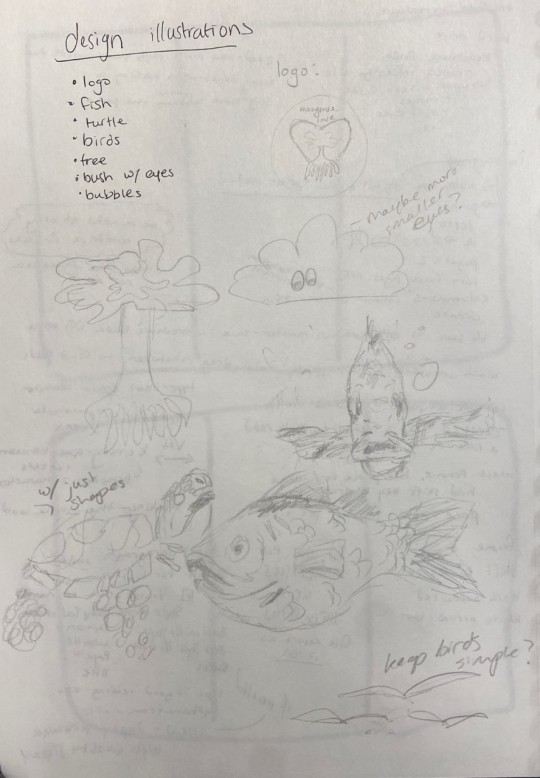


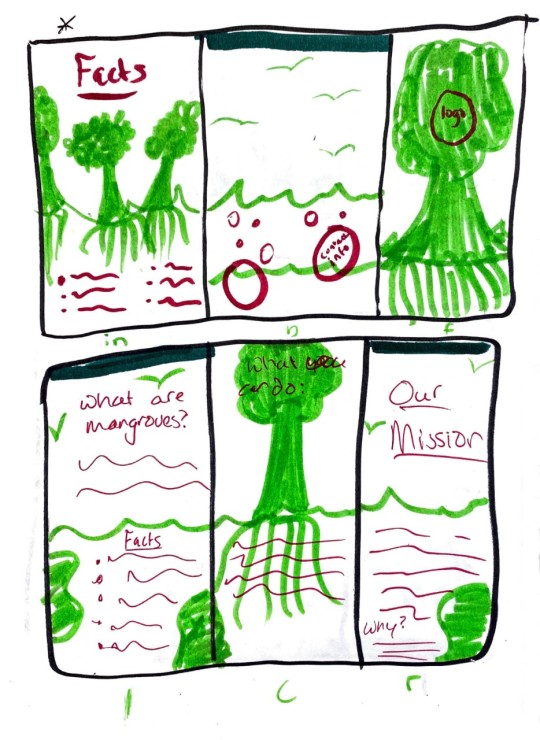


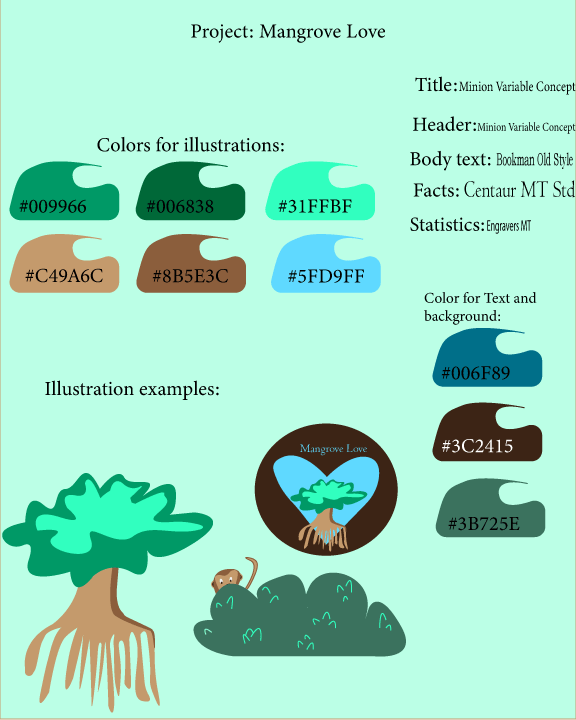

Global Mangrove Restoration and Protection
Project Proposal:
Mangroves are trees that survive in water and land. They filter out toxic chemicals and protect our coastlines from natural disasters. They also provide a large ecosystem base for many birds, insects, reptiles and animals. It is important to have an advocacy campaign because this is a problem worldwide. Deforestation is creating the loss of these habitats and ecosystems along the coastlines. Many different species are being affected, birds, animals, and plants are closer and closer to extinction as the problem gets worse. To take action and support this campaign, you can donate as we account or buy private land and restore and protect these lands. We are partnered with Conservation International. There is also a monthly email newsletter to remind you to donate, in return you will get stickers and have access to the current research data that our teams are producing, and you are able to see on paper the difference that you personally are making. Our team will have the email list linked on our pamphlets as well as our Venmo to help support our funding and research for donations.
My color scheme is nature, including the following colors: #009966, #3B725E, #006838, #31FFBF, #C49A6C, #8B5E3C, #3C2415, #5FD9FF, and #006F89. With the use of these colors, I intend to make the audience feel empathetic towards nature, to have pity. For the title and header, I am using Minion Variable Concept. For the body text I plan on using Bookman Old Style. I will state the facts in Papyrus, and for statistics I will be using Engravers MT. I am using these fonts because I feel as if they give the design character, especially for the statistics and facts, they are a more eye-catching font than the rest. All of these elements together will give a sense of appreciation towards the world's beauty, as these are colors that are seen in nature on a day-to-day basis. Hopefully then causing the viewer to donate towards the cause.
Statement:
The current problem is deforestation of these lands. People move to the coasts and build on these lands. It impacts the coastline as mangroves are a way of protecting our coastlines and in-lands from hurricanes, tsunamis etc. With deforestation it also causes habitat loss for many species. With the loss of these mangrove areas we are also seeing an increase in toxins in the waters and plants and nature. Mangroves naturally remove these toxins and filter them through their roots.
We target these larger construction companies that are destroying these lands, and we are trying to protect these lands.
We are partnered with Conservation International to help protect these lands.
This audience can donate money and time to help do research around these land to further help support and conserve these places. We account for private land investment to buy and protect these lands.
Call to Action is to donate via Venmo/check and to sign up for our monthly email subscription. With the monthly email subscription comes a free informational booklet containing information on what research projects are currently being done and the research data as well as some stickers that we will send you.
Research:
-“A mangrove is a woody tree or shrub that lives along sheltered coastlines within the tropic or subtropic latitudes.”
“Mangroves are among the most productive and biologically complex ecosystems on Earth. They cover between roughly 53,000 and 77,000 square miles (138,000 and 200,000 square km) globally, acting as a bridge connecting the land and sea.”
MLA Citation: The Ocean Portal Team Reviewed by Candy Feller. “Mangroves.” Smithsonian Ocean, 18 Dec. 2018, https://ocean.si.edu/ocean-life/plants-algae/mangroves.
-“35% of the world’s mangroves have been lost since 1980.
Sea-level rise threatens to drown mangroves in the United States, Thailand, Papua New Guinea and elsewhere this century.
Unsustainable aquaculture — primarily shrimp farming — is driving large-scale clearing of mangroves.”
What they are doing to help: “Conservation International, the International Union for Conservation of Nature, and the Intergovernmental Oceanographic Commission of UNESCO lead the Blue Carbon Initiative (BCI), a global collaboration focused on mitigating climate change by conserving and restoring the world’s coastal marine ecosystems, including mangroves. Through the BCI’s scientific working group, we’re helping to coordinate an agenda for blue carbon research, produce information that supports projects in blue carbon ecosystems, build a global network for blue carbon science and develop a resource of country and region-specific expertise.”
MLA Citation: “Mangroves.” Conservation International, https://www.conservation.org/priorities/mangroves.
-"The long roots of mangroves hold sediments in place, slow the pace of water, prevent erosion, and stabilize the coastline. Mangroves also provide habitat for many species of fish, crabs, sponges, corals and oysters that find protection from predators or places to grow among the roots."
MLA Citation: “Mangroves.” National Parks Service, U.S. Department of the Interior, https://www.nps.gov/subjects/oceans/mangroves.htm.
-1. "They are a natural coastal defense
2. They are carbon sinks
-An examination of 25 mangrove forests across the Indo-Pacific region found that per hectare, they held up to four times more carbon than other tropical rainforests.
3. They provide livelihoods
4. They encourage ecotourism
5. They are rich in biodiversity
-The International Union for Conservation of Nature’s (IUCN) Red List shows that of 68,574 species of invertebrates, 8,374 were on the brink of extinction."
MLA Citation: “5 Reasons to Protect Mangrove Forests for the Future.” World Economic Forum, https://www.weforum.org/agenda/2019/02/5-reasons-to-protect-mangrove-forests-for-the-future/#:~:text=Mangroves%20provide%20valuable%20protection%20for,is%20stored%20within%20the%20plant.
0 notes
Text
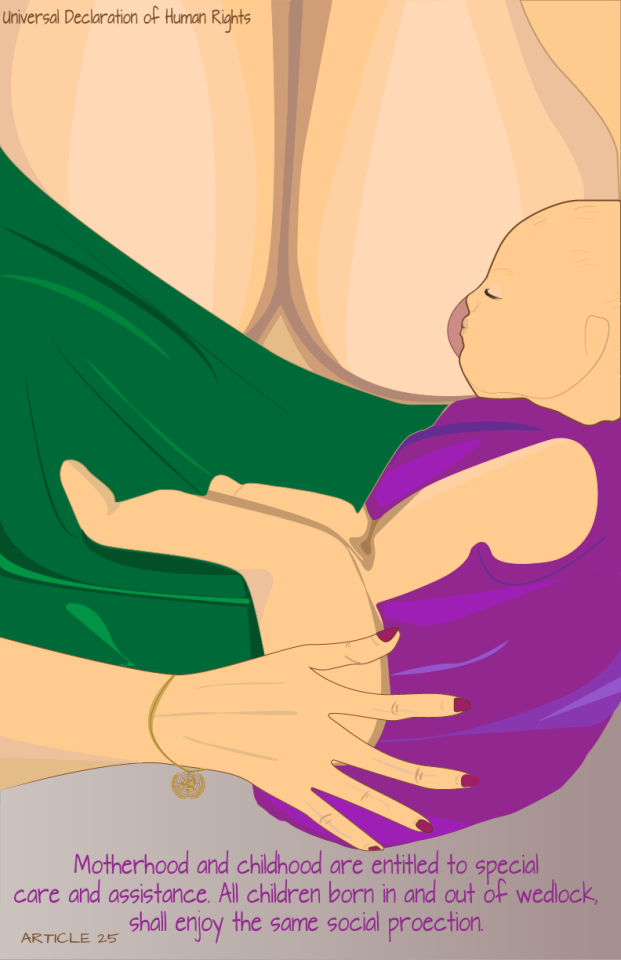

This is my piece that I did based on the Universal Declaration of Human Rights, article number twenty-five section two. This part of the declaration states “Motherhood and childhood are entitled to special care and assistance. All children, whether born in or out of wedlock, shall enjoy the same social protection.”
I believe that my poster successfully supports my article. I believe that it is a very easy illustration to read. The illustration takes up a large portion of the poster, it catches the eye. It is also very understandable and simple. The text is a decent enough size, and the important part of the text is in a larger font size and color to make it more appealing to read first. I believe that the specific colors visually go together, especially with the layering to create shadows on the skin areas. It is quite unified as well. We can see that the text that isn’t as important is also the color of the baby’s clothes.
I believe it is unified enough for a non-English speaker to be able to comprehend. As I have stated before the image is quite readable. My creative process for this piece was quite interesting.
I enjoyed creating this piece a lot. I first started by looking through the Universal Declaration of Human Rights, and I selected this one, because especially for the times right now it is a relevant topic. Woman and their bodies have a lot of controversy at this point in time. What is right for a woman and what is not. But for this specific piece I wanted to give the idea as natural. Breastfeeding is a natural biological process. So I wanted to illustrate that, and I created this piece. I then started working on the mother figure first, then moved to the child, added the background, and finally added the text. I went through a lot of revisions during this whole process. I got feedback from my professor to somehow incorporate shadows to maybe make it look more realistic and less flat. So, with that feedback I added shading to the hand, chest, clothing, and on the baby figure.
When we had our first critique, I was indecisive of what I wanted to do. I had two good sketches, this idea being one of them, and another sketch of a pregnant woman figure. I got feedback that maybe the figure would be too simple, so I could either think of a way to add more detail or chose this idea instead. I chose this one because I almost liked it more, and I knew it would be a challenge.
At our second critique, I got feedback stating that I could play with my text font more, and the arrangement of my text. So, I did, and I like the result, it's an elegant and simple look. I feel as though it goes along with my illustration. I wanted the text to take care of the negative space, and I think it worked out quite well.
I felt as though when we were given past student examples, it was very helpful. I liked to see the different rendering styles. I also enjoyed seeing the way that other people had arranged their text/image together. I believe that it gave me inspiration and more creative ways to look at placement, colors, and overall aesthetic with different articles and their meanings.
all text- "font squirrel": Architects Daughter https://www.fontsquirrel.com/fonts/architects-daughter
0 notes
Text
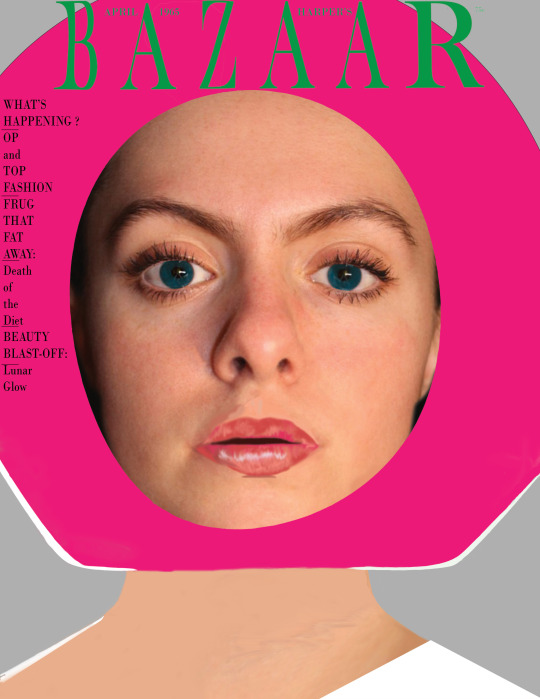
I indeed did find it challenging to recreate this piece. I have never used Photoshop before on a real project. I am still learning how everything is set up in Photoshop, and all of the different tools and their locations. I also struggled with the layers. Having to rearrange them so something shows, or having to be selected before I can edit on a certain layer tricked me more than a few times. It was frustrating and aggravating, but I learned A LOT in the process.
My techniques differed from the original work in multiple ways. First, I did all of it digitally besides the photograph. I had an unprofessional friend take the portrait of me, this resulted in a not head on shot. Which then later resulted in more shadowing on the right side of my face. Whereas, looking back on the original work , you really can see how professional the photograph of the model is. Another thing that differed was the process of creation. In the original work the artists used Glo-Paper to create the shape of the “space helmet” around the models head. I didn’t use Glo-Paper, instead I used the shape tool in Photoshop. I believe that working digitally did change the aesthetic a little bit. I think that there is less detail and texture in my piece versus the original piece. Even though the aesthetic changed, I do not believe that the message of the piece changed.
Something that I found interesting about the original work was how much effort was put into the photograph of the model, you can tell for sure that the photographer was experienced. I also liked the back story of the piece. It was inspired by the sexual revolution for women, the space race, and “youthquake”. We can see examples of inspiration from the sexual revolution being the fact that it is a woman model on the front cover of the magazine, and the helmet is pink instead of white. The helmet itself is obviously inspired by the space race, as well as the use of wording on the left side of the magazine. Youthquake was a movement for pop art/fashion and culture. Youthquake evolved a lot of colors. So, the green and pink colors being used may have been inspire by that certain movement.
I think that I could’ve added a lot more detail, I just wasn’t sure as to how to approach that. But I am still learning photoshop, so I believe the more I use it the more I will get used to it. I think that I maybe could’ve somehow fixed the shadowing on the neck. I also feel like there is a lot of texture in the original work. I wasn’t sure how to add that, so maybe if I had more time and resources, I could fix that.
0 notes
Text

Ruth Ansel 1965 Harper's Bazaar; Cover Photograph by Richard Avedon © The Richard Avedon Foundation
This piece was made for the April 1965 Harper's Bazaar Magazine. Ruth Ansel was the designer, the photographer was Richard Avedon, and the model used in the picture is Jean Shrimpton.
It was crated quite last minute as the model was previously shot in a hat that the editor and photographer hated. Ansel took DayGlo paper and cut the hot pink shape and placed it around the models head and loved it. The inspiration for this photograph was the space race, Youthquake, pop art, and the sexual revolution. The idea was to crate a positive image for all of the inspirations that went into the piece.
MLA Citations:
Ansel, Ruth. “Photos: Ruth Ansel's Design of the Times.” Vanity Fair, Vanity Fair, 18 June 2010, https://www.vanityfair.com/culture/photos/2010/06/art-director-ruth-ansel-slide-show-201006.
Design the Visionary - static1.Squarespace.com. https://static1.squarespace.com/static/561eaed4e4b09058780f2ad8/t/5629664ce4b0b0d8bdbd5518/1445553740889/ruth+ansel.pdf.
“Bazaar Archive: Ruth Ansel.” Harper's BAZAAR, Harper's BAZAAR, 27 Mar. 2018, https://www.harpersbazaar.com/uk/culture/bazaar-art/news/a38138/bazaar-flashback-ruth-ansel/.
0 notes
Text

Here is a recent piece that I created in Adobe Photoshop.
A new tool that I learned to use was the blur tool. It came in handy when I was blending the sky into the tree line and the persons face. I am interested in growing my skills in the area of arrangement. I would like to better myself in placement and how to make placement look more organized and professional.
The biggest obstacle while working with this software is how layers work with each-other and how to arrange each layer so that the object that I want is in front of or behind the other object. I think I just need to keep practicing this software to get a hang of it. A goal that I would make for myself is to be patient. This is an absolute brand new medium for myself. It takes time to learn things, and I just need to remember that so do not frustrate myself.
0 notes
Text

Hi! My name is Camille Clark and I am a current student at SUNY Brockport. I am a Art Studio with a graphic design concentration. I also have a minor in Media Production and Kinesiology. A lot of my art is inspired by mom's flower farm. Here is a recent mixed media piece I did.
1 note
·
View note